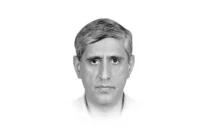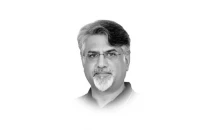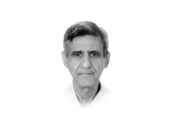The many faces of Afghan peace
Taliban are not as cohesive as one thinks, younger generation of foot soldiers are ideological, less likely to sway.

But obstacles still remain that will likely hamstring efforts at peaceful negotiations, namely, bringing all three elements of the Taliban resistance movement to the table. While Zabiullah Mujahid has taken centre stage, claiming to represent the interests of Mullah Muhammad Omar, the Taliban’s Amirul Momineen or ‘Commander of the Faithful’, US and Afghan officials have heard little from the latter over the past year, raising doubts over his control of the insurgency.
Indeed, the fluid nature of the Taliban movement, soldiered by younger and reportedly more radical Talibs, know little of Omar other than anecdotal forebodings. What is more, top experts of the group believe that he has been reduced to a mere spectral and ceremonial figure than an authoritative spokesman.
In addition, the Haqqani network of the insurgency, responsible for the most brazen attacks on US checkpoints in Afghanistan over the last year has yet to be approached to partake in the peace process. Although the Haqqanis have publically pledged their allegiance to Mullah Omar, historically, the group stood apart from the wider movement’s ambitions to rule Afghanistan under Sharia law and instead favoured a more moderate Islamic Republic. Of course, if they both have aspirations in having a say in the country’s future, there could be problems.
Earlier this week, Afghan president Hamid Karzai met with representatives from the third limb of the Taliban resistance movement, the Hezb-i-Islami, led by the revered ex-Mujahedeen commander Gulbuddin Hekmatyar, to discuss the group’s prospects for compromise with the current Afghan government. But the talks were anything but fruitful with no mention of engaging the group again in the future.
Separate from the Taliban, remains the problem with Pakistan. Any push towards a peace process in Afghanistan must carry Pakistan’s blessing, and so far, the country’s powers that have not issued an official statement supporting or rejecting efforts at reconciliation. It would be fair to assume at this stage that Pakistan’s preference is to have an Afghanistan ruled by the Taliban to crowd out any influence in the country from India, its perpetual adversary. Naturally, Natos projected withdrawal from the region in 2014 has led US officials to believe that this will be brought to fruition if the peace process fails, unraveling all successes that took 10 years to achieve.
Indeed, discerning the various interests and structures of the Afghan insurgency has proved to be a Herculean task for both the US and Afghan governments. Essentially, the prospects of reaching a political solution have attracted the moderate elements of the insurgency in the hope that the radical cadres would eventually follow suit. But as Afghan peace council member Mohammad Ismail Qasimyar noted recently, the Taliban are not as cohesive as one may think, especially the younger generation of foot soldiers, which are more ideological and less likely to be swayed.
Given these stark complications, bringing peace to war-ravaged Afghanistan will be difficult but hopefully in the coming years, not impossible.
Published in The Express Tribune, January 31st, 2012.














COMMENTS
Comments are moderated and generally will be posted if they are on-topic and not abusive.
For more information, please see our Comments FAQ